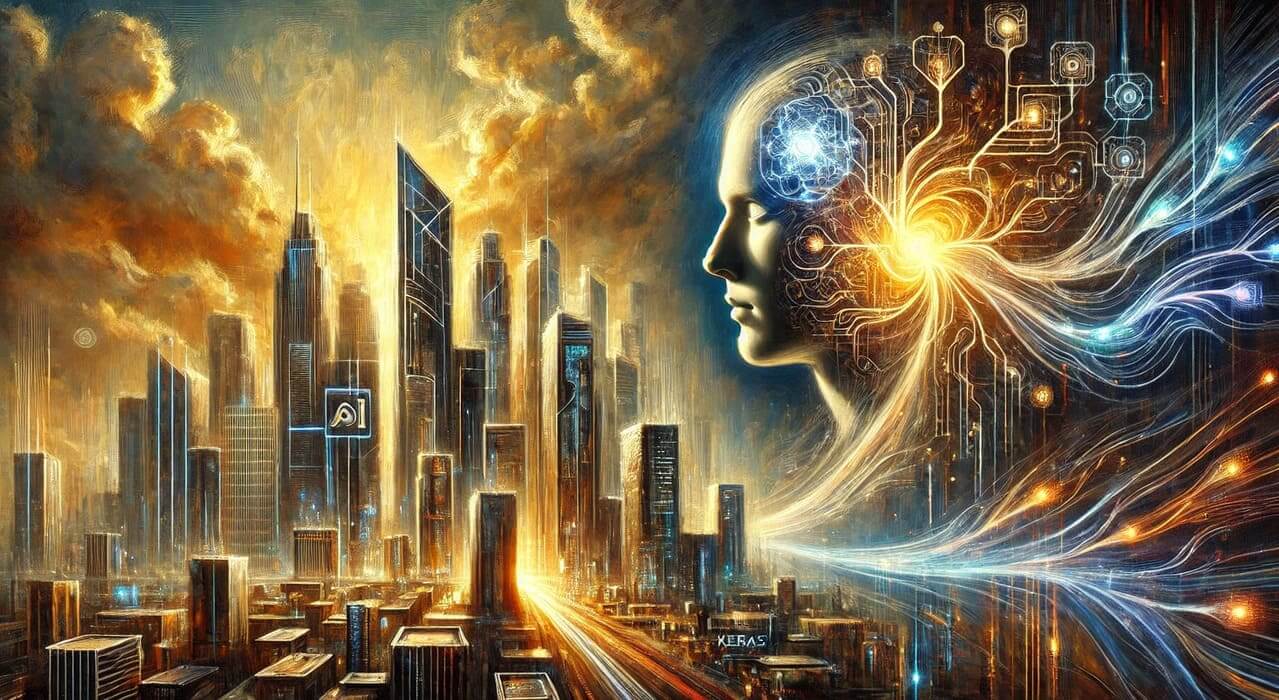I. Introduction: The AI Renaissance and Keras’s Role in It
The artificial intelligence revolution is no longer confined to research labs or tech giants. It’s infiltrating every industry, reshaping healthcare, finance, entertainment, and beyond. At the heart of this transformation is Keras, a high-level neural networks API that has made deep learning more accessible than ever before (Manaswi, 2018). With its intuitive design, Keras lowers the barriers to entry, enabling researchers, engineers, and hobbyists alike to harness the power of AI. It takes complex mathematical frameworks and distills them into something elegant, something almost magical.
Why Keras? Because it strips away the convoluted syntax and technical overhead that once made deep learning an exclusive club. With just a few lines of code, anyone can start building sophisticated AI models. Keras doesn’t just empower developers—it democratizes innovation.
II. What is Keras, and Why Does It Matter?
Keras is an open-source deep learning library designed to run seamlessly on top of TensorFlow. While other machine learning frameworks often demand exhaustive coding and detailed configuration, Keras champions a philosophy of usability, modularity, and efficiency (Joseph, Nonsiri, & Monsakul, 2021). It was built with human-centered design in mind, allowing developers to focus on crafting breakthrough ideas instead of wrestling with unnecessary complexity.
What sets Keras apart? It offers two intuitive approaches to building models: the Sequential API, ideal for simple layer-stacked models, and the Functional API, which provides unmatched flexibility for constructing complex architectures (Manaswi, 2018). These features make Keras the go-to framework for deep learning enthusiasts and industry experts alike.
III. The Science Behind the Simplicity
Beneath its user-friendly interface, Keras integrates seamlessly with TensorFlow, offering immense computational power (Joseph et al., 2021). It optimizes hardware utilization, running efficiently on GPUs and TPUs, ensuring high-performance AI applications across multiple domains.
Yet Keras is not just about ease of use. It has evolved into a robust platform capable of supporting cutting-edge deep learning techniques.
- Graph Neural Networks (GNNs) with Keras: GNNs represent a major breakthrough in AI, allowing machines to understand relationships between data points in ways that mimic human cognition. These networks are crucial for applications in finance, recommendation systems, drug discovery, and more. Keras simplifies their implementation, bringing sophisticated AI within reach (Reiser, Eberhard, & Friederich, 2021).
IV. Keras in the Real World: Transforming Industries
Keras isn’t just an academic tool—it is actively shaping the modern world. Companies and researchers are leveraging its power to drive innovations that would have seemed like science fiction just a decade ago.
AI-Driven Maintenance & Reliability Forecasting
Imagine an industrial plant where machinery never fails unexpectedly. AI models powered by Keras analyze real-time sensor data, predicting failures before they happen. This allows companies to conduct proactive maintenance, reducing downtime and saving millions in operational costs (Do, Iung, & Cavalcante, 2019).
Scientific Computing & Physics-Informed AI
Deep learning is no longer confined to image recognition and language processing. Keras is being used to revolutionize scientific computing, helping researchers model complex physical phenomena, simulate chemical reactions, and even solve previously intractable equations in physics and engineering (Haghighat & Juanes, 2020). AI-driven scientific discovery is no longer a pipe dream—it’s happening now.
V. The Future of Keras: The People’s AI Tool
As artificial intelligence continues its march toward mainstream adoption, Keras remains at the forefront, serving as a bridge between cutting-edge technology and real-world usability. It embodies the philosophy that AI should be accessible, intuitive, and open to all (Manaswi, 2018).
With continued enhancements and growing industry adoption, Keras is poised to remain the go-to framework for AI pioneers and beginners alike. It evolves alongside advancements in deep learning, ensuring that as AI capabilities grow, so too does the accessibility of these powerful tools.
VI. Conclusion: The AI Revolution is Here—And It’s Never Been Easier to Join
Deep learning has long been regarded as an exclusive field, requiring advanced expertise and massive computational resources. Keras has shattered that notion, making AI accessible to anyone with curiosity and a willingness to experiment. It has democratized machine learning, turning what was once an esoteric science into a creative playground for innovators across the globe.
Whether you’re a researcher, an entrepreneur, or simply an AI enthusiast, Keras offers you a front-row seat to the future of intelligence. The revolution isn’t coming—it’s already here. And thanks to Keras, it has never been easier to be a part of it.
References
Do, P., Iung, B., & Cavalcante, C. (2019). Reliability and maintenance cost forecasting for systems with multistate components using artificial neural networks. 2019 4th International Conference on System Reliability and Safety (ICSRS), 181-185. http://dx.doi.org/10.1109/ICSRS48664.2019.8987700
Haghighat, E., & Juanes, R. (2020). SciANN: A Keras/TensorFlow wrapper for scientific computations and physics-informed deep learning. Computer Methods in Applied Mechanics and Engineering. https://doi.org/10.1016/j.cma.2020.113552
Joseph, F. J., Nonsiri, S., & Monsakul, A. (2021). Keras and TensorFlow: A hands-on experience. Advanced Deep Learning for Engineers and Scientists. http://dx.doi.org/10.1007/978-3-030-66519-7_4
Manaswi, N. (2018). Understanding and working with Keras. Springer. http://dx.doi.org/10.1007/978-1-4842-3516-4_2
Reiser, P., Eberhard, A., & Friederich, P. (2021). Implementing graph neural networks with TensorFlow-Keras. ArXiv. https://doi.org/10.48550/arXiv.2103.04318


